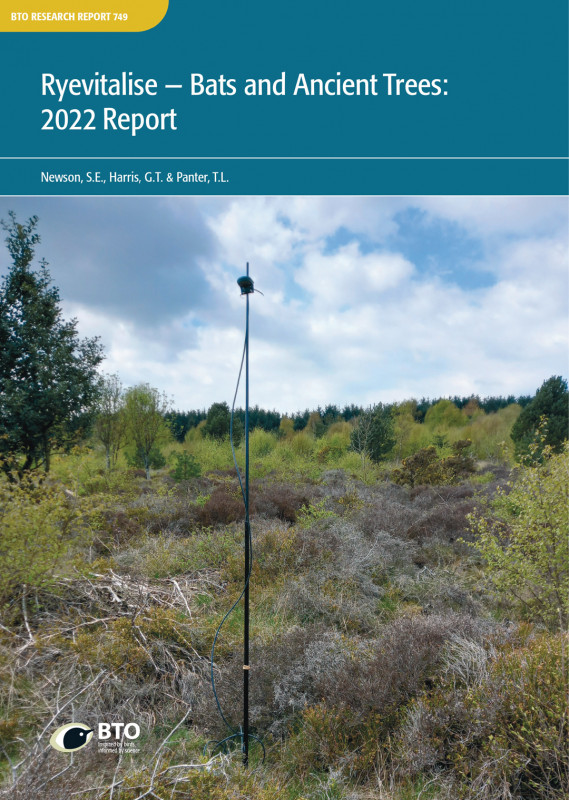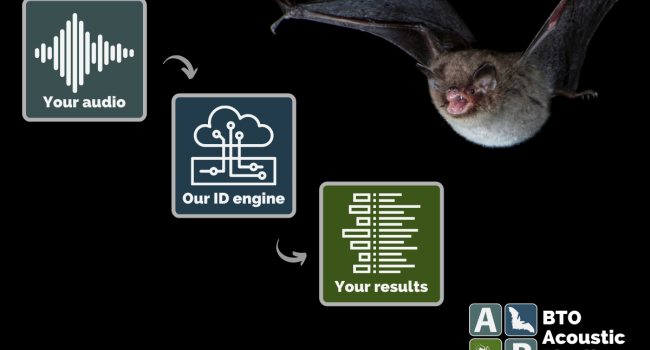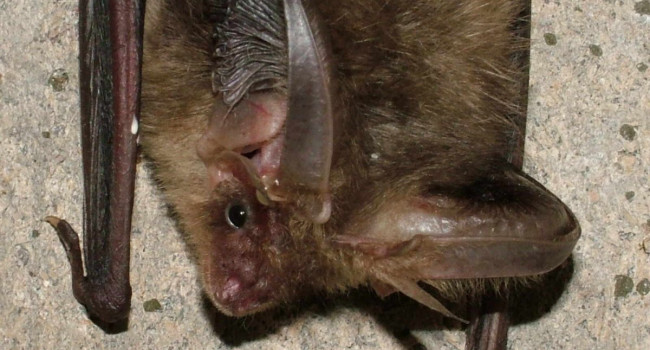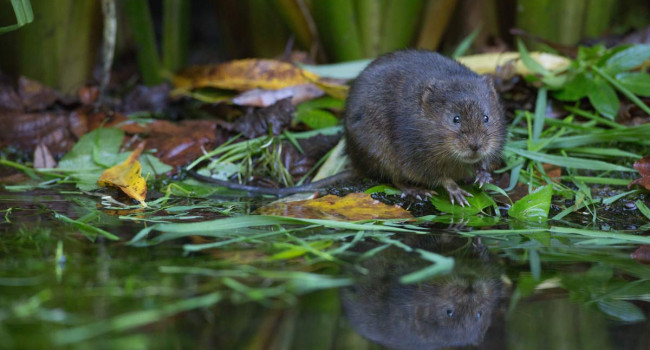Ryevitalise – Bats and Ancient Trees: 2022 Report

Author(s): Newson, S.E., Harris, G.T. & Panter, T.L.
Published: December 2022 Issue No.: 749
Publisher: British Trust for Ornithology Pages: 53pp
ISBN: 978-1-912642-44-1
Download article 5.49 MB application/pdf
Abstract
Over 2022, 100 different locations across the Ryeitalise Landscape Partnership Scheme area were surveyed. Recording was undertaken on a minimum of 160 different nights mainly between May and the end of September, amounting to a total of 413 nights of recording effort across sites. Sound recordings were uploaded by volunteers to the BTO Acoustic Pipeline, through which a first automated analyses was carried out and provisional results returned.
Recordings were then moved to deep glacial storage for later auditing. At the end of the survey season, a copy of the recordings was pulled back and manual auditing of the results/recordings carried out.
Overall, 581,251 recordings were collected which, following analyses and validation, were found to include 278,447 bat recordings, and 427 small terrestrial mammal recordings. Bush-crickets and audible moth species were also recorded as ‘by-catch’, for which we report species presence on a site and night basis.
Following validation, the study confirmed the presence of at least eight bat species, three small mammal species, one species of bush-cricket, and two audible moth species. This includes the first record of Leisler’s Bat Nyctalus leisleri for the project.
More generally, this season of data adds to our understanding of the status of all species of bats across the Ryevitalise Landscape Partnership area, and of the relative importance of different areas. In addition, the bush-cricket species Long-winged Conehead Conocephalus fuscus was recorded for the first time for the survey from two locations.
Lastly, the project provides data on the distribution and activity of several species of small terrestrial mammals for the Ryevitalise Landscape Partnership Scheme area. The report includes a full species-by-species breakdown of spatial, seasonal, and through-the-night patterns of activity.








Share this page